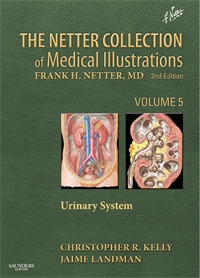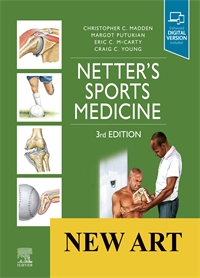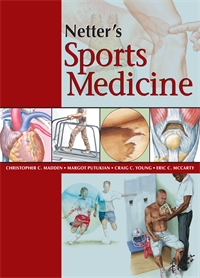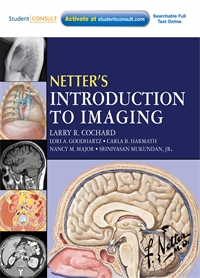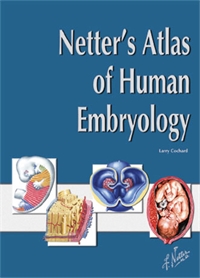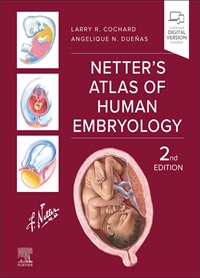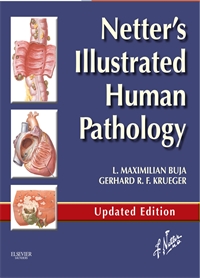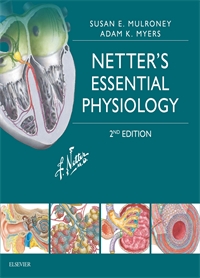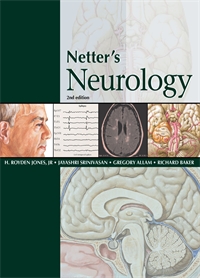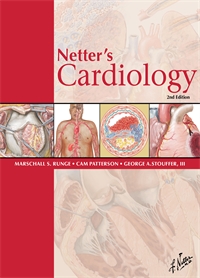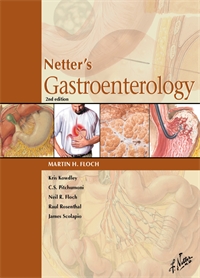Collection of Medical Illustrations, Urinary System - Volume 5 - 2E
2nd Edition
Author: Christopher R. Kelly
ISBN: 9781437722383
- Page 2: Anatomic Relations of the Kidney Kidneys In Situ: Anterior Views
- Page 3: Anatomic Relations of the Kidney - Posterior Relations of the Kidneys Kidneys In Situ: Posterior Views
- Page 4: Kidney: Position and Relations (Continued)
- Page 5: Kidney: Gross Structure
- Page 6: Benign Tumors of Lung
- Page 7: Anatomic Relations of Ureters Ureters
- Page 8: Pelvic Viscera and Perineum: Male
- Page 9: Urinary Bladder: Female Urinary Bladder: Orientation and Supports
- Page 10: Urinary Bladder: Female and Male
- Page 11: Renal Artery and Vein In Situ Renal Vasculature
- Page 12: Renal Vasculature
- Page 13: Renal Vasculature (Continued)
- Page 14: Arteries of Ureters and Urinary Bladder Blood Supply of Ureters and Bladder
- Page 15: Innervation of Kidneys, Ureters and Bladder Nerves of Kidneys, Ureters and Urinary Bladder
- Page 16: Innervation of Urinary System (continued)
- Page 17: Innervation Pathways of the Ureter and Bladder
- Page 18: Lymph Vessels and Nodes of Kidneys and Urinary Bladder Lymphatic Drainage of Kidneys, Ureters and Urinary Bladder
- Page 19: Anatomy of the Nephron Nephron and Collecting Tubule: Schema The Nephron
- Page 20: Blood Vessels in Parenchyma of Kidney: Schema Intrarenal Vasculature - Pattern of Blood Vessels in Parenchyma of Kidney
- Page 21: Glomerulus
- Page 22: Fine Structure of Renal Corpuscle
- Page 23: Glomerulus: Electron Microscopy
- Page 24: Proximal Tubule
- Page 25: Thin Limb
- Page 26: Distal Tubule
- Page 27: Collecting Duct
- Page 28: Renal Pelvis, Ureter, and Bladder
- Page 30: Development of Kidney
- Page 31: Development of Kidney: Nephron Formation
- Page 32: Development of Bladder and Ureter: Formation of the Cloaca
- Page 33: Development of Bladder and Ureter: Formation of the Cloaca
- Page 34: Renal Ascent and Ectopia: Normal Renal Ascent and Pelvic Kidney
- Page 35: Renal Ascent and Ectopia: Thoracic and Crossed Ectopic Kidney
- Page 36: Renal Rotation and Malrotation
- Page 37: Potter Sequence Oligohydramnios
- Page 38: Anomalies in Number of Kidneys: Unilateral Renal Agenesis
- Page 39: Anomalies in Number of Kidneys
- Page 40: Renal Fusion
- Page 41: Renal Dysplasia
- Page 42: Renal Hypoplasia
- Page 43: Simple Cysts
- Page 44: Renal Cystic Diseases
- Page 45: Polycystic Kidney Disease: Radiographic Findings
- Page 46: Medullary Sponge Kidney
- Page 47: Nephronophthisis/Medullary Cystic Kidney Disease Complex
- Page 48: Retrocaval Ureter: Radiographic Findings and Laproscopic Repair
- Page 49: Retrocaval Ureter: Normal Development of the Inferior Vena Cava
- Page 50: Vesicoureteral Reflex: Mechanism and Grading
- Page 51: Vesicoureteral Reflex: Voiding Cystourethrograms
- Page 52: Ureteral Duplication: Complete
- Page 53: Incomplete Duplication of Ureter
- Page 54: Ectopic Ureter
- Page 55: Ureterocele
- Page 56: Ureterocele: Radiographic Findings
- Page 58: Absent Abdominal Musculature: "Prune-Belly" Syndrome
- Page 59: Hypospadia, Epispadia
- Page 60: Exstrophy of the Bladder
- Page 61: Duplication and Septa of the Bladder
- Page 62: Anomalies of the Urachus
- Page 63: Congenital Bladder Outlet Obstruction
- Page 64: Posterior Urethral Valves: Radiographic Findings
- Page 67: Basic Functions and Homeostasis
- Page 68: Clearance and Estimation of Renal Plasma Flow
- Page 69: Glomerular Filtration Rate
- Page 70: Creatinine Clearance
- Page 71: Principle of Tubular Reabsorption Limitation (Tm) Using Glucose As Example
- Page 72: Secretion and Reabsorption: Fractional Excretion (Clearance Ratios)
- Page 73: Nephron Sites of Sodium Reabsorption
- Page 74: Renal Handling of Sodium and Chloride: Response to Extracellular Fluid Contraction
- Page 75: Renal Handling of Sodium and Chloride: Response to Extracellular Fluid Expansion
- Page 76: Renal Handling of Potassium
- Page 77: Calcium and Phosphate Excretion
- Page 78: Models to Demonstrate Principle of Countercurrent Multiplier in Creating High Interstitial Osmotic Gradient and Urine Concentration
- Page 79: Models to Demonstrate Principle of Countercurrent Multiplier in Creating High Interstitial Osmotic Gradient and Urine Concentration
- Page 80: Models to Demonstrate Principle of Countercurrent Exchange System of Vasa Recta in Minimizing Dissipation of Medullary Osmotic Gradient
- Page 81: Water, Ion, and Urea Exchange In Production of Hypertonic Urine (ADH Present) ADH Secretion and Action
- Page 82: Water, Ion, and Urea Exchange in Production of Hypotonic Urine (ADH Absent)
- Page 83: Antidiuretic Hormone
- Page 84: Renin-Angiotensin-Aldosterone System
- Page 85: Tubuloglomerular Feedback and Renin-Angiotensin-Aldosterone System
- Page 86: Acid-Base Balance: Roles of Chemical Buffers, Lungs, and Kidneys in Acid-Base Handling
- Page 87: Acid-Base Balance: Renal Bicarbonate Reabsorption
- Page 88: Acid-Base Balance: Renal Bicarbonate Synthesis and Proton Excretion
- Page 89: Role of Lungs and Kidneys in Regulation of Acid-Base Balance
- Page 90: Additional Functions: Erythropoiesis and Vitamin D
- Page 92: Normal Urinary Acidfication - Renal Tubular Acidosis: Proximal Tubular Defect
- Page 93: Nephrogenic Diabetes Insipidus
- Page 94: Major Causes and Symptoms of Nephrogenic Diabetes Insipidus (Continued)
- Page 96: Overview of Acute Kidney Injury: Causes
- Page 97: Overview of Acute Kidney Injury: Possible Urine Sediment Findings
- Page 98: Acute Tubular Necrosis: Causes, Pathophysiology, and Clinical Features
- Page 99: Acute Tubular Necrosis: Histopathologic
- Page 100: Overview of Nephrotic Syndrome: Pathophysiology
- Page 101: Overview of Nephrotic Syndrome: Causes
- Page 102: Overview of Nephrotic Syndrome: Presentation and Diagnosis
- Page 103: Minimal Change Disease: Causes and Presentation
- Page 104: Minimal Change Disease: Histopathologic Findings
- Page 105: Focal Segmental Glomerulosclerosis: Causes, Clinical Features, and Histopathologic Findings
- Page 106: Focal Segmental Glomerulosclerosis: Histopathologic Findings (Continued)
- Page 107: Membranous Nephropathy: Causes and Clinical Features
- Page 108: Membranous Nephropathy: Histopathologic Findings
- Page 109: Overview of Glomerulonephritis: Clinical Features and Histopathologic Findings
- Page 110: Overview of Glomerulonephritis: Histopathologic Findings (Continued)
- Page 111: IgA Nephropathy: Causes and Clinical Features
- Page 112: IgA Nephropathy: Histopathologic Findings
- Page 113: IgA Nephropathy: Histopathologic Findings (Continued)
- Page 114: Postinfectious Glomerulonephritis: Causes and Clinical Features
- Page 115: Postinfectious Glomerulonephritis: Histopathologic Findings
- Page 116: Postinfectious Glomerulonephritis: Histopathologic Findings (Continued)
- Page 117: Membranoproliferative Glomerulonephritis: Causes, Features, and Assessment
- Page 118: Complement Pathways
- Page 119: Membranoproliferative Glomerulonephritis: Histopathologic Findings
- Page 120: Rapidly Progressive Glomerulonephritis
- Page 121: Hereditary Nephritis (Alport Syndrome)/Thin Basement Membrane Nephropathy: Pathophysiology and Clinical Features
- Page 122: Hereditary Nephritis (Alport Syndrome)/Thin Basement Membrane Nephropathy: Electron Microscopy Findings
- Page 123: Acute Interstitial Nephritis: Causes and Clinical Features
- Page 124: Acute Interstitial Nephritis: Histopathologic Findings
- Page 125: Chronic Tubulointerstitial Nephritis and Analgesic Nephropathy
- Page 126: Chronic Tubulointerstitial Nephritis: Histopathologic Findings
- Page 127: Thrombotic Microangiopathy: General Features
- Page 128: Thrombotic Microangiopathy: Hemolytic Uremic Syndrome
- Page 129: Thrombotic Microangiopathy: Throbotic Thrombocytopenic Purpura
- Page 130: Thrombotic Microangiopathy: Throbotic Thrombocytopenic Purpura
- Page 131: Renal Artery Stenosis: Pathophysiology of Renovascular Hypertension
- Page 132: Renal Artery Stenosis: Causes
- Page 133: Congestive Heart Failure: Types of Left Heart Failure and Effects on Renal Function
- Page 134: The Kidneys in Congestive Heart Failure
- Page 135: Hepatorenal Syndrome: Proposed Pathophysiology
- Page 136: Hepatorenal Syndrome: Symptoms and Diagnosis
- Page 137: Chronic and Malignant Hypertension: Major Causes
- Page 138: Chronic and Malignant Hypertension: Renal Histopathology (Chronic)
- Page 139: Chronic and Malignant Hypertension: Renal Histopathology (Malignant)
- Page 140: Diabetic Nephropathy: Diabetes Mellitus
- Page 141: Diabetic Nephropathy
- Page 142: Amyloid Deposit / Sites and Manifestations
- Page 143: Amyloidosis: Histopathologic Findings
- Page 144: Major Diagnostic Criteria of Systemic Lupus Erythematosus (SLE)
- Page 145: Lupus Nephritis: Renal Histopathology (Classes I and II Lesions)
- Page 146: Lupus Nephritis: Renal Histopathology (Classes III and IV Lesions)
- Page 147: Lupus Nephritis: Renal Histopathology (Class V Lesions)
- Page 148: Myeloma Nephropathy: Pathophysiology and Clinical Findings
- Page 149: Myeloma Nephropathy: Histopathologic Findings
- Page 150: HIV-Associated Nephropathy: Light Microscopy Findings
- Page 151: HIV-Associated Nephropathy: Electron Microscopy Findings
- Page 152: HIV Life Cycle and Antiretroviral Medications
- Page 153: Preeclampsia: Clinical Definition and Potential Mechanism of Pathogenesis
- Page 154: Preeclampsia: Renal Pathology
- Page 155: Preeclampsia: HELLP Syndrome and Eclampsia
- Page 156: Henoch-Sch�nlein Purpura: Diagnostic Criteria
- Page 157: Henoch-Schönlein Purpura: Additional Clinical Features
- Page 158: Fabry Disease
- Page 159: Cystinosis: Pathophysiology and the Renal Fanconi Syndrome
- Page 160: Cystinosis: Extrarenal Manifestations
- Page 161: Overview of Chronic Kidney Disease: Staging System and Major Causes
- Page 162: Overview of Chronic Kidney Disease: Normal Calcium and Phosphate Metabolism
- Page 163: Overview of Chronic Kidney Disease: Calcium and Phosphate Metabolism in Chronic Kidney Disease
- Page 164: Overview of Chronic Kidney Disease: Mechanism of Progression and Complications
- Page 165: Overview of Chronic Kidney Disease: Uremia
- Page 168: Cystitis: Risk Factors
- Page 169: Cystitis: Common Symptoms and Tests
- Page 170: Cystitis: Evaluation
- Page 171: Cystitis: Treatment
- Page 172: Pyelonephritis: Risk Factors and Major Findings
- Page 173: Acute Pyelonephritis: Pathology
- Page 174: Bacteriuria: Management of Asymptomatic Bacteriuria
- Page 175: Intrarenal and Perinephric Abscesses
- Page 176: Dissemination of Tuberculosis
- Page 177: Tuberculosis of the Urinary Tract
- Page 178: Urinary Schistosomiasis
- Page 179: Schistosomiasis: Effects of Chronic Schistosoma Haematobium-Infection
- Page 182: Obstructive Uropathy: Etiology
- Page 183: Obstructive Uropathy: Sequelae
- Page 184: Formation of Urinary Calculi
- Page 185: Calculous Urinary Obstruction
- Page 186: Urolithiasis: Appearance of Renal Stones
- Page 187: Ureteropelvic Junction Obstruction
- Page 188: Ureteral Strictures
- Page 190: Renal Injuries: Grading System and Renal Parenchymal Injuries
- Page 191: Renal Injuries: Renal Hilar Injuries
- Page 192: Ureteral Injuries
- Page 193: Bladder Injuries: Extraperitoneal Bladder Ruptures
- Page 194: Bladder Injuries: Intraperitoneal Bladder Ruptures
- Page 196: Voiding Dysfunction: Anatomy of Female Urinary Continence Mechanisms
- Page 197: Voiding Dysfunction: Neural Control of Bladder Function and Effects of Pathologic Lesions
- Page 198: Voiding Dysfunction: Stress Urinary Incontinence
- Page 199: Urodynamics Testing
- Page 200: Urodynamics: Sample Urodynamic Recordings
- Page 202: Benign Renal Tumors: Papillary Adenoma and Oncocytoma
- Page 203: Benign Renal Tumors: Angiomyolipoma
- Page 204: Renal Cell Carcinoma: Risk Factors and Radiographic Findings
- Page 205: Malignant Tumors of the Kidney
- Page 206: Renal Cell Carcinoma: Histopathologic Findings
- Page 207: Malignant Tumors of the Kidney
- Page 208: Wilms Tumor: Genetics, Presentation, and Radiographic Findings
- Page 209: Wilms Tumor: Gross Appearance and Histopathologic Findings
- Page 210: Tumors of the Renal Pelvis and Ureter: Risk Factors and Radiographic Appearance
- Page 211: Tumors of the Renal Pelvis and Ureter: Appearance (Ureteroscopic, Gross, and Microscopic) and Staging System
- Page 212: Tumors of the Bladder: Risk Factors, Symptoms, and Physical Examination
- Page 213: Tumors of the Bladder: Cystoscopic and Radiographic Appearance
- Page 214: Tumors of the Bladder: Histopathologic Findings and Staging System
- Page 216: Osmotic Agents
- Page 217: Carbonic Anhydrase Inhibitors
- Page 218: Loop Diuretics
- Page 219: Thiazide Diuretics
- Page 220: Potassium-Sparing Diuretics
- Page 221: Inhibitors of the Renin-Angiotensin System
- Page 222: Renal Biopsy: Indications and Structure of Typical Spring-Loaded Needle
- Page 223: Renal Biopsy: Procedure
- Page 224: Hemodialysis, Peritoneal Dialysis, and Continuous Therapies: Hemodialysis
- Page 225: Catheter Placement
- Page 226: Peritoneal Dialysis
- Page 227: Extracorporeal Shock Wave Lithotripsy
- Page 228: Percutaneous Nephrolithotomy: Creation of Access Tract
- Page 229: Percutaneous Nephrolithotomy: Nephroscope and Sonotrode
- Page 230: Urinary Calculi: Percutaneous Ultrasonic Lithotripsy
- Page 231: Pyeloplasty and Endopyelotomy
- Page 232: Renal Revascularization: Endovascular Therapies
- Page 233: Renal Revascularization: Surgical Therapies
- Page 234: Surgical Approach to the Kidney
- Page 235: Simple and Radical Nephrectomy: Open Simple Nephrectomy (Flank Approach)
- Page 236: Simple and Radical Nephrectomy: Laparoscopic Radical Nephrectomy (Transperitoneal Approach [Left-Sided])
- Page 237: Partial Nephrectomy: Open Partial Nephrectomy (Retroperitoneal [Flank] Approach)
- Page 238: Partial Nephrectomy: Laparoscopic Partial Nephrectomy (Transperitoneal Approach)
- Page 239: Renal Ablation: Laparoscopic Cryoablation (Retroperitoneal Approach)
- Page 240: Renal Ablation: Percutaneous Cryoablation
- Page 241: Kidney Transplantation
- Page 242: Mechanisms of Action of Immunosuppressive Medications
- Page 243: Renal Transplantation: Causes of Graft Dysfunction in Immediate Post-Transplant Period
- Page 244: Renal Transplantation: Causes of Graft Dysfunction in Early Post-Transplant Period
- Page 245: Renal Transplantation: Acute Rejection (Pathologic Findings)
- Page 246: Renal Transplantation: Calcineurin Inhibitor Nephrotoxicity (Histopathologic Findings)
- Page 247: Renal Transplantation: Causes of Graft Dysfunction in Late Post-Transplant Period
- Page 248: Ureteroscopy: Device Design and Deployment
- Page 249: Ureteroscopy: Stone Fragmentation and Extraction
- Page 250: Ureteral Reimplantation
- Page 251: Ureteral Reconstruction
- Page 252: Cystoscopy: Cystoscope Design
- Page 253: Cystoscopy: Cystoscopic Views
- Page 254: Transurethral Resection of Bladder Tumor: Equipment and Procedure
- Page 255: Transurethral Resection of Bladder Tumor: Procedure (Continued)
